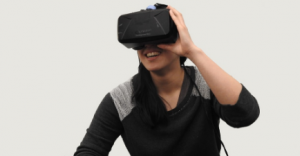 When it comes to virtual reality, it’s amazing how far we’ve gone in a relatively short amount of time. As I’m still trying to figure out Guitar Hero, the concept of holographic concerts has taken off. And while I’m still trying to understand holographic concerts, they’re taking that even further with virtual reality. Last year, the remaining members of Queen collaborated with Google Play and Enosis VR to create a 360-degree virtual reality take on the groundbreaking video for their 1975 hit Bohemian Rhapsody. This animated clip has been credited with fueling the boom in pop videos in the upcoming decade.
When it comes to virtual reality, it’s amazing how far we’ve gone in a relatively short amount of time. As I’m still trying to figure out Guitar Hero, the concept of holographic concerts has taken off. And while I’m still trying to understand holographic concerts, they’re taking that even further with virtual reality. Last year, the remaining members of Queen collaborated with Google Play and Enosis VR to create a 360-degree virtual reality take on the groundbreaking video for their 1975 hit Bohemian Rhapsody. This animated clip has been credited with fueling the boom in pop videos in the upcoming decade.
The interactive VR app uses 2D and 3D animations mixed together with motion-captured ballet dancers, immersing the viewer in Freddie Mercury’s “subconscious mind”. Depending on where you look through the VR headset, the narrative alters. The song was remixed and mastered as well to create an interactive audio experience where the sound changes as the viewer turns their head.
These “immersive” technologies, while still relatively new, are transforming what was once little more than a gimmick into a huge industry. Watching something in 360 degrees in a powerful sensation, more so than watching it on your flat computer screen. Even though this technology is still relatively new, and affordable VR headsets only recently came onto the market, the music industry has always been one for experimentation, and it will be interesting to see what they do with this unique technology. VR is already becoming a “visual-centric” music landscape. Take, for example, the film accompanying Beyonce’s Lemonade album and Frank Album’s “visual album” Endless, which suggest a strong future for visual music experiences. As the music industry becomes bigger and bigger, and more competition emerges, it offers a chance to stand out from everybody else.
In addition to really cool music videos, VR offers unique opportunities for live music. Imagine that you want to attend a concert, but it’s sold out; not a problem if you have VR! Live Nation announced last year that they would be teaming up with US bank Citi and NextVR to create a series of VR live events. And while I still love going to Phish concerts, arrays of cameras that capture a 360-degree images from a number of vantage points could offer an experience completely unique from being there in person. It also allows bands to perform live in a shared VR and space, meaning they won’t need to hire expensive venues.
Of course, the question on everybody’s mind is how to make this commercially viable. For example, the American company Vrtify specializes in taking traditional music content and turning it into an immersive experience, paying 70% of its income back to artists. And once the audiences grow, there will be a chance for advertising, membership subscriptions and pay-per-view. Yet before this happens and this technology goes mainstream, the tech behind it needs to improve, and it needs to become more affordable.
If you’d like to learn more, you can click here!
